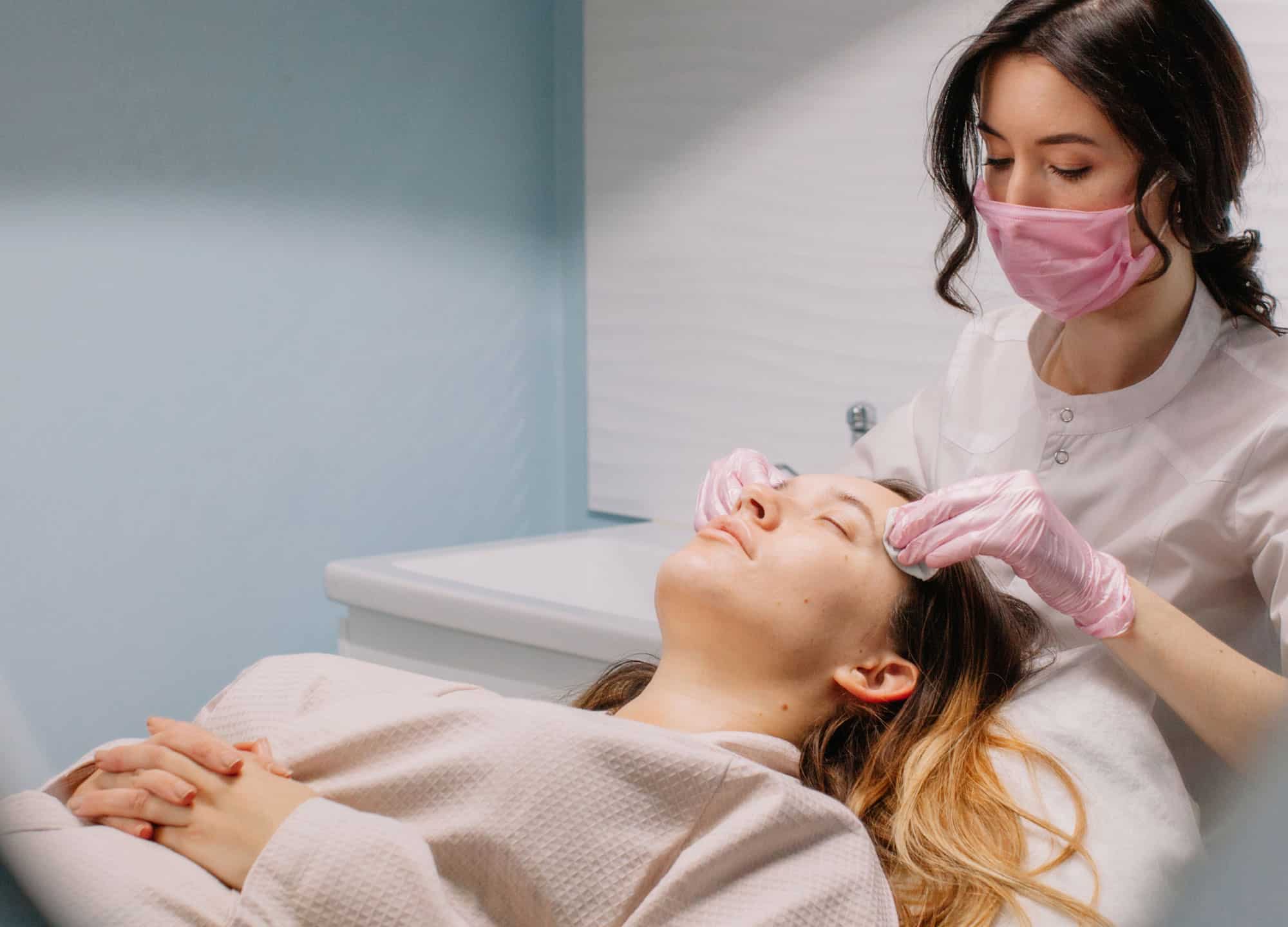Chemical peels are incredible, and perhaps underrated, multitaskers. They improve acne and hyperpigmentation (including melasma), help soften wrinkles, and brighten dull skin. But all peels are not created equal, and they’re certainly not a one-size-fits-all treatment. For starters, there are different types, such as beta hydroxy acids (BHAs), which include salicylic acid; alpha hydroxy acids (AHAs), such as glycolic and lactic; and trichloroacetic acid (TCA). Dermatologists often use various combinations in order to get the best results in treating specific issues. “Because each has a different interaction with skin proteins, they have varying specializations,” says Dr. Ellen Marmur, a board-certified dermatologist in New York City. “For example, TCA targets pigment, while retinoic and salicylic acids zone in on oil glands.”
After your provider asks about your medical history, including Accutane or retinoid use, allergies to topical ingredients, and medications that you’re taking—all of which, Dr. Marmur says, can make your skin thinner or more vulnerable to the application of acids—“they will choose the appropriate kind of peel and the concentration that will be safest and most effective for your particular skin type and condition.”
The strength of the peel
Peels are classified as superficial, medium-depth, or deep. Superficial peels exfoliate dead cells from the epidermis, or the outer layer of skin, using AHAs or BHAs; medium peels target the epidermis as well as the upper middle layers of the dermis, typically with glycolic acid or TCA; and deep peels, which use phenol or TCA and often require sedation and pain medication, go even farther, to help with scarring and significant wrinkles.
“A higher concentration of acid will penetrate deeper into the skin, disintegrating cells as it moves through,” explains Dr. Marmur. “Many dermatologists combine a few different acids at milder concentrations, rather than doing one superintense deep peel, which can cause side effects or complications.” This strategy is especially important when treating skin of color.
“For my patients with dark skin, I use a series of milder peels to avoid postinflammatory hyperpigmentation [PIH],” says Dr. Michelle Henry, a board-certified dermatologist in New York City. “It’s much safer to do multiple treatments but at a lower strength. For someone with fair skin, I can use a more aggressive medium-depth peel without that risk.” She adds that it’s especially important for those with dark skin to “make sure that the person administering the peel, even a superficial one, has had a lot of experience doing peels on skin of color.”
The best peels for acne
Dr. Henry uses salicylic acid because it targets overactive sebaceous glands and dissolves the buildup of oil and keratinocytes that clog pores, plus it has anti-inflammatory benefits. Dr. Marmur considers a series of salicylic peels to be a gold-standard treatment for acne: “I’ve found it can work wonders for patients who cannot tolerate a systemic medication like Accutane.”
The best peels for hyperpigmentation
“TCA is melanotoxic, which means it decimates pigment, such as in melasma, says Dr. Marmur, who does a 30% TCA peel on herself twice a year to keep her own melasma at bay. There’s also an important therapeutic bonus to TCA: “Many precancers, such as actinic keratosis, are in the epidermis, so a medium-depth peel can literally burn off the damaged cells,” she says. On dark skin, Dr. Henry uses a lower concentration to avoid the potential for PIH. “I’ll do 10% or less, which is considered a superficial peel.”
The best peels for complexion rejuvenation
“A TCA or a Jessner’s peel is effective if you want to soften fine lines, even the skin tone, fade brown spots, smooth texture, and shrink pores,” explains Dr. Marmur. (The Jessner’s solution combines a specific ratio of AHA, BHA, and TCA.) “A series of peels is a much more budget-friendly skin resurfacing option than fractionated laser treatments and offers almost immediate gratification, even after the first treatment.” Once the initial redness and peeling go away (usually a week to 10 days for a 30% TCA peel and a couple days for a light peel), you will see glowing fresh skin revealed, says Dr. Marmur.
The Cosmelan peel is another popular option that delivers superficial to mid-level resurfacing for those with melasma and hyperpigmentation, but it requires a bit more work on the patient’s end. Your provider will apply the thick brown peel—Cosmelan 1—in the office, then ask you to leave it on for 8 to 12 hours before rinsing it off at home. Then, 48 hours later, you’ll apply Cosmelan 2, a cream with a similar formula as the peel, once a day for up to a year.
Superficial peels—often referred to as “lunchtime peels,” since you can return to work right afterward—include professional systems such as the Obagi Blue Peel Radiance Peel, with 20% salicylic acid, and the SkinCeuticals TCA peel, which has 15% TCA. (They are done by licensed professionals, in a doctor’s office or medical spa.) “These light peels improve texture, brightness, and tone,” says Dr. Janet Allenby, a board-certified dermatologist in Delray Beach, Florida. “There’s less downtime with these gentler treatments, and less risk for hyperpigmentation—especially in sunny Florida.” (Her office uses the SkinMedica Vitalize and Illuminize peel systems.) But a superficial peel isn’t a one-and-done treatment, like a facial. To get optimal results, Dr. Allenby recommends a series of four to six (spaced about two weeks apart).











